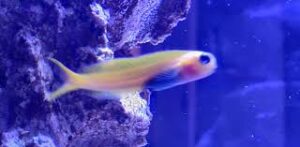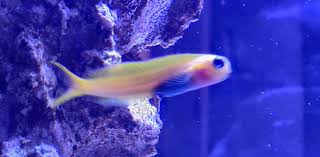Exploring the Relationship Between Dragons and Natural Elements in Chinese Culture

In Chinese culture, the dragon is a powerful symbol that transcends mere mythology. It represents strength, power, and auspicious energy, but it also embodies a deep connection with the natural world. Dragons in Chinese culture are seen as guardians of the Earth’s elements, harmonizing with the forces of nature—water, wind, earth, fire, and metal. These natural elements are not only essential to life but are believed to be governed or influenced by dragons. In this article, we explore the intricate relationship between dragons and the five elements—water, wind, earth, fire, and metal—and how these forces are represented in Chinese mythology, philosophy, and culture.
1. The Dragon as a Symbol of Power and Nature
In traditional Chinese belief, dragons are seen as supreme beings that transcend human comprehension. Unlike the fearsome dragons of Western culture, Chinese dragons are benevolent creatures, often associated with positive forces such as prosperity, fertility, and harmony. Dragons in Chinese culture are particularly connected with the natural world and are believed to possess the ability to control and balance the forces of nature. They are, in essence, embodiments of nature’s dynamic energy.
The concept of Qi (氣), a life force or energy that flows through all things, is central to Chinese philosophy. Dragons are considered the manifestation of Qi, able to control and regulate this vital force, which interacts with the natural world. This relationship between dragons and natural elements is not only a reflection of their symbolic power but also their role in maintaining the balance of the cosmos.
2. Dragons and Water: The Element of Life and Transformation
Water has always been one of the most significant natural elements in Chinese culture, symbolizing life, flow, and abundance. In Chinese mythology, the dragon is often depicted as a water deity, controlling the rivers, seas, and lakes. Dragons are believed to have the ability to summon rain, making them vital for agricultural societies that depend on consistent rainfall for their crops.
One of the most well-known aspects of the dragon’s connection to water is the Dragon King (龙王), the ruler of the sea and rain. In folklore, the Dragon King is a divine figure who controls the water bodies and is often depicted with a serpentine body, symbolizing the flowing nature of water. It is said that the Dragon King resides in the East Sea, and his mood directly influences the climate. If he is pleased, there will be abundant rainfall; if he is angered, he may cause floods or droughts.
The importance of the dragon in controlling water is also represented in feng shui practices. In feng shui, dragons are placed strategically around homes or gardens to harness the positive energy of water and ensure a harmonious flow of Qi. Water, especially moving water, is seen as the dragon’s natural domain, and when balanced correctly, it is believed to bring prosperity, health, and longevity.
3. Dragons and Wind: Masters of the Air
In Chinese cosmology, wind is considered one of the five elements that govern the universe. It represents movement, change, and transformation. Wind plays a critical role in the harmony of nature, carrying the essential elements such as moisture and energy across the land. Dragons, in many myths, are associated with the wind, further emphasizing their ability to control and manipulate the forces of nature.
The wind is often portrayed as the dragon’s breath or as a force that dragons can summon at will. In one legend, a dragon’s breath was said to be the cause of the winds that swept across the Earth, bringing both destruction and renewal. The wind, much like the dragon, is unpredictable and powerful, capable of shaping the landscape and altering the environment. Dragons are said to control the direction and intensity of the wind, making them essential figures in ensuring the balance between calm and storm.
The association between dragons and the wind also extends to Chinese medicine. In traditional Chinese medicine (TCM), the wind is thought to carry diseases and imbalances. It is believed that the dragon, as a figure that controls the flow of wind, can also help in healing and restoring balance in the human body. A dragon’s presence in healing rituals is said to regulate the wind, thus fostering overall health and well-being.
4. Dragons and Earth: Guardians of the Land
The earth element in Chinese culture is often connected with stability, nurturing, and growth. Dragons’ relationship with the earth reflects these qualities, as they are often seen as guardians of the land and its prosperity. In Chinese mythology, the dragon is not only a symbol of water and air but also has a close affinity with the mountains and earthly realms.
In many traditional Chinese legends, dragons are believed to inhabit the mountains and caves, particularly the dragon’s lair, a sacred place where the dragon resides and protects the land. The dragon is often seen as the protector of sacred natural spaces, such as mountains, forests, and rivers. These spaces are believed to be imbued with the dragon’s energy, ensuring that the land remains fertile and prosperous.
A significant aspect of the earth element in relation to dragons is their connection to agriculture. As dragons control water and rain, they also play a key role in ensuring bountiful harvests. In agrarian societies, the dragon was often invoked to bring good fortune to crops, ensuring that the land produced abundant food. In this way, dragons were seen as the stewards of the earth, working in harmony with the natural cycles of growth and decay.
5. Dragons and Fire: The Element of Passion and Destruction
While water, wind, and earth are typically the primary elements associated with dragons, the element of fire also plays a role in some legends and interpretations. Fire represents passion, transformation, and sometimes destruction. In some myths, dragons are said to possess the ability to breathe fire, symbolizing their destructive potential as well as their role in renewal.
The connection between dragons and fire is particularly significant in the cosmological sense, where fire represents the transformative energy that drives the world’s cycles. Dragons are often portrayed as possessing the ability to control fire, using it for both creation and destruction. For example, the dragon is said to be able to ignite storms, burning away impurities and enabling new life to emerge from the ashes. In this way, fire represents the dragon’s creative force, capable of bringing about both great beauty and great destruction.
In Chinese alchemy and Taoism, the dragon is also seen as a symbol of spiritual transformation. The dragon’s ability to control both water and fire represents the balance of opposing forces, showing that the dragon can guide humans toward spiritual enlightenment and personal growth. This duality of creation and destruction mirrors the Taoist philosophy of Yin and Yang, where balance is essential for harmony in the universe.
6. Dragons and Metal: The Element of Strength and Structure
Metal, the last of the five elements in Chinese cosmology, is often associated with strength, structure, and precision. Although dragons are not typically seen as directly linked to metal in the same way as water, fire, wind, or earth, the symbolism of metal does appear in certain contexts. Dragons are seen as powerful beings, their scales often depicted as golden or silver, symbols of wealth and durability. These qualities are linked to the enduring nature of metal, which is often used to build structures, tools, and weapons.
In some legends, dragons are said to possess metallic scales that are nearly indestructible, reflecting their immense power and resilience. This connection to metal signifies the immortality of the dragon, whose strength and wisdom transcend time. Dragons are often depicted with an aura of gold or jade, two precious materials that are revered in Chinese culture for their association with nobility, wealth, and permanence.
In Chinese art, dragons are frequently depicted intertwined with the element of metal, particularly in the design of objects such as ceremonial vessels, jewelry, and weapons. These artistic representations further reinforce the dragon’s symbolism as a powerful and indomitable force in nature, one that represents the enduring qualities of strength, wealth, and honor.
7. Conclusion: The Balance of Nature and the Dragon’s Power
The dragon, as an elemental being, is deeply connected with the natural world in Chinese culture. Its role in controlling and balancing the forces of water, wind, earth, fire, and metal reflects its power and influence over the elements that sustain life. The dragon is not just a mythical creature but a symbol of cosmic balance, representing the harmony between nature’s forces and the harmony of human existence.
In Chinese philosophy, the five elements are thought to be interconnected, each influencing and being influenced by the others. The dragon, as a central figure in Chinese mythology, exemplifies this interconnectedness. It is the guardian of the elements, ensuring that each force—whether water, wind, earth, fire, or metal—flows in harmony with the others, maintaining the balance necessary for life to flourish.
In the end, the dragon is not just a figure of myth or art; it is a living symbol of the natural forces that shape the world around us, embodying the principles of balance, transformation, and harmony that are at the heart of Chinese thought.

